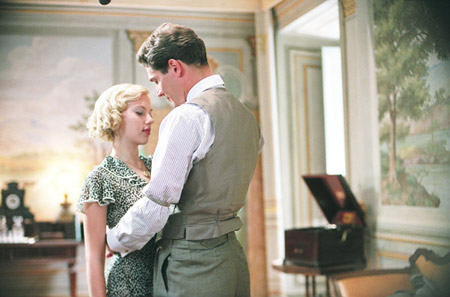A Good Woman

This adaptation of Oscar Wilde’s “Lady Windermere’s Fan” has all the excitement of styrofoam. I have no idea how many more times the studios will confuse bone-dry pseudointellectual melodrama of the cultural elite for artistic cinema.
During the 1930’s, in the coastal town of Amalfi, Italy, arrives Mrs. Erlynne (Helen Hunt), a socialite with a sordid past behind her (or so she thinks) in Manhattan. Another American from Rhode Island, Meg Windermere (Scarlett Johansson) and her recently betrothed Robert (Mark Umbers), become acquainted with Mrs. Erlynne—a benefactor in more ways than one.
The film is no different than any other society-gossip flick, including Jack Clayton’s abysmal “The Great Gatsby,” in which the enigma of Gatsby is as elusive to us because of Redford’s characterization as are the past affairs of Mrs. Erlynne, thanks to an equally-wooden performance by Helen Hunt. There are murmurings upon murmurings, platitudes upon platitudes; Lord Darlington (Stephen Campbell Moore) amuses only himself when he observes, “Have we another country that’s managed to go from barbarism to imperialism without civilization in between?”
Maybe this is how the idle rich act. If so, they clearly make uninteresting subjects for film. There seems to be in the literature of 19th-century England a perverse fascination with class conflict as though all writers had suddenly run dry of ideas and thus, inevitably, fell back on Shakespeare who mastered the subject. Every such story centers around a young woman who upsets the balance of high society, and an elder foil of one sort or another who represents the hypocrisy of said society. This, however, was not what made Shakespeare’s plays work.
The inclusion of class conflict as a classical Shakespearean plot mechanism into Nineteenth-century English literature is missing a critical element: Satire. I’m certain that Austen, Wilde, and others all implemented it to varying degrees in their works, though not even a close second to the linguistic legerdemain of the Bard himself. However, in the movie, satire is precisely what’s conspicuously absent.
Steve Martin had the right idea when he partly adapted Shakespeare’s A Midsummer Night’s Dream into “L.A. Story.” I’ve referenced it many times before, and I’ll reference it again because it is probably one of the most underappreciated films of the latter 20th century. When lovers are exchanged in “L.A. Story,” how could one attempting to adapt Shakespeare’s play not see the inherent hilarity of the situation? That’s the only way the story works when pulled into the present.
There’s perhaps one scene in “A Good Woman” that actually works, in a dialogue during a game of golf between Robert and Lord “Tuppy” Augustus (Tom Wilkinson), who has his eye on Mrs. Erlynne. The problem is this scene exists in the middle of a movie that’s otherwise uninteresting, with characters that seem like caricatures of society bitches rather than human beings. Maybe the movie is intended to be about society bitches, but do we feel anything for Meg when she cries as her man and others are partying and drinking on her birthday? Surprisingly, no, despite Johansson’s otherwise inescapable charisma.
The film takes its self so goddamned seriously that the magical bullshit departure of Erlynne on a plane into the mountains results in a cheap and obvious metaphor in which the Fairy Godmistress returns to the place from which she came (“A lady always leaves the way she came,” foreshadows Erlynne early in the film) in a white plane as though on the wings of an angel. Blah, blah, etc., etc. You know the rest.
 A Good Woman • Dolby® Digital surround sound in select theatres • Running Time: 93 minutes • MPAA Rating: PG for thematic material, sensuality and language. • Distributed by Lions Gate Films
A Good Woman • Dolby® Digital surround sound in select theatres • Running Time: 93 minutes • MPAA Rating: PG for thematic material, sensuality and language. • Distributed by Lions Gate Films